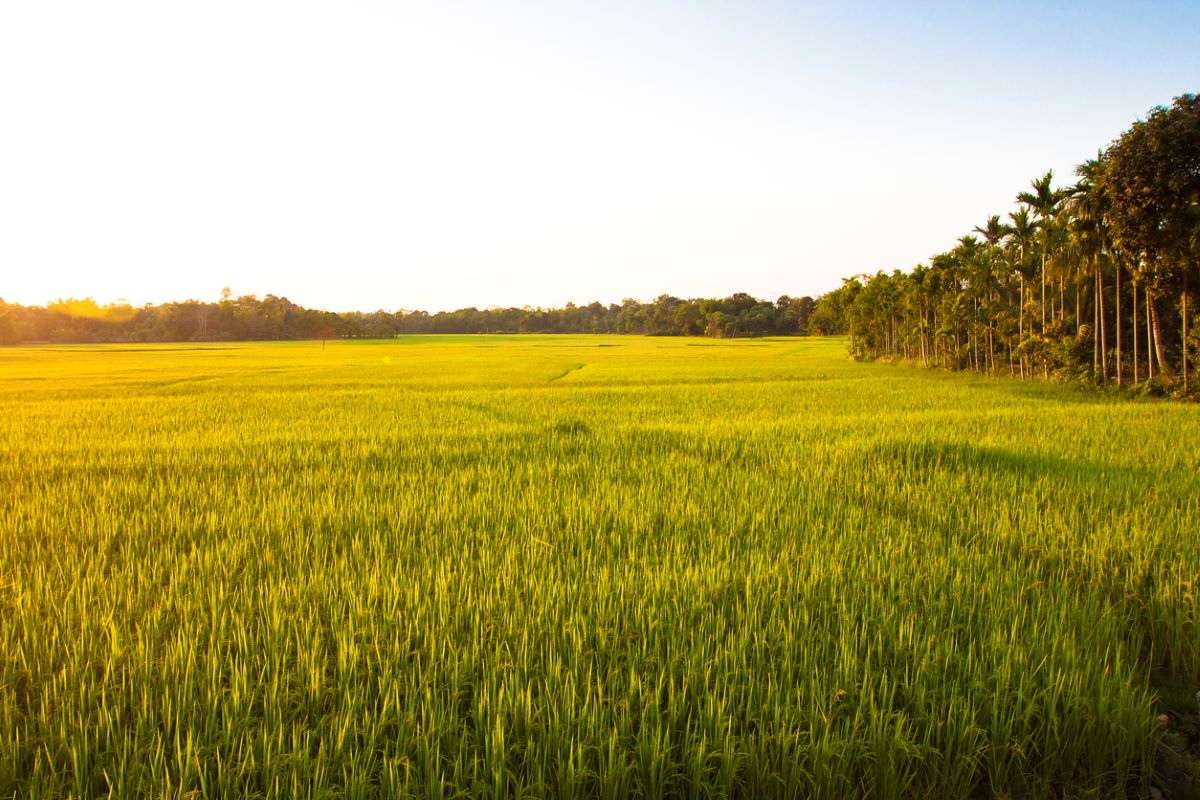PM Modi to release 19th instalment of PM-KISAN scheme at Bhagalpur, Bihar on Feb 24
Prime Minister Narendra Modi will release the 19th instalment of the PM-KISAN scheme at Bhagalpur, Bihar on Monday.
As per agriculture census 2014, about 86 per cent of Indian farmers own less than two hectares of land. Hence, most Indian farmers are ‘economically marginalized’ and they are unable to earn enough to run their families. This dearth of liquid cash forces them to seek refuge in rapidly industrialising urban centres across the nation.

representational image (iStock photo)
The rapid economic development of India is at the cost of its land resources and environment. Arable lands are getting transformed into sky rises, and villages fringing the mega cities are turning into satellite towns to house rural populations migrating near urban settlements in search of livelihood.
The land use patterns across the nation are changing rapidly, with attendant environmental impacts. In a nation with more than 166 million people dependent on agriculture, any changes in land use patterns can have a cascading impact on environment and quality of life. India has diverse biodiversity, climate, topography, socioeconomic conditions, and land use patterns.
Advertisement
Pollution, climate change and groundwater scarcity are impacting soil resources across the nation. Expansions of urban conglomerations are adding to these problems. As per Niti Ayaog, urban settlements occupy 3 per cent of India’s geographical area but contribute 60 per cent of national GDP. The rate of urbanization is continuously increasing. This rate of increase is about 3.36 per cent between 2000 and 2011.
Advertisement
Ministry of Housing and Urban Affairs reported 2,774 new townships across the country within this time duration. India already has a population of about 1.39 billion. It is estimated that this population will surge to 1.52 billion by 2036. With the population expansion, paucity of livelihood options and shortages of residential spaces, people are migrating towards nearby villages in almost all cities of India.
As per agriculture census 2014, about 86 per cent of Indian farmers own less than two hectares of land. Hence, most Indian farmers are ‘economically marginalized’ and they are unable to earn enough to run their families. This dearth of liquid cash forces them to seek refuge in rapidly industrialising urban centres across the nation.
Air, water, land pollution, unorganised waste dumps and overcrowded alleyway in cities are reducing the quality of life in the cities. These constraints are fuelling a reverse migration of the affluent urban population to to less polluted and less crowded suburbs or villages fringing the mega cities. Thus, the demand for houses in townships in remote areas has increased in the last couple of decades.
Technology, road networks and transportation facilities have improved over the years. Due to high demand in these remote townships, Indian villages are slowly converting into small towns. It is estimated that urban areas will account for 70 per cent of human settlements in the near future. The new houses in a clean environment improve the quality of life and are good for social welfare in these urban satellite centres. Unfortunately, construction processes are not environmentally friendly, as these activities change the land use pattern, destroy the existing biodiversity and decrease the groundwater recharge.
Construction of buildings on fertile and arable lands is not permitted in India. However, there is a loophole in this policy. There is a provision for the town planning department to first convert the land from agricultural to residential and then permitting construction projects. Changes in the land use pattern impact global environmental conditions. The buildings and construction processes are responsible for about 40 per cent of total global CO2 emission. Concrete alone contributes 4 to 8 per cent.
It is estimated that the world produces enough concrete annually to cover more than 13,000 square km land, an area equal to the size of England. In contrast, agriculture contributes only 14 per cent of greenhouse gases basically in the form of methane and nitrous oxides. Apart from this, dense construction and concrete flooring cause urban heat which results in higher daytime temperature, lower cooling in night, air pollution and heat related mortality.
On the other hand, agriculture demands huge irrigation water. It is estimated that single time irrigation requires 1 lakh litres of freshwater per hectare of land. About 70 per cent of the freshwater is used for irrigation. Thus, water-intensive crops are causing water pollution and water scarcity in many areas of Punjab, Haryana and Uttar Pradesh. The poor agricultural practices also pollute land as well as the groundwater.
Extensive usage of chemicals degrades the land and makes it infertile. Hence, both urbanization as well as agricultural practices have massive environmental footprints that require immediate redressal in the wake of climate change. Land use management plays an important role in setting up urban and rural populations as well as in maintaining natural resources, the ecosystem and biodiversity. Unsustainable townships and buildings in fertile lands will cause unavailability of arable land which will force farmers to apply more chemical-intensive methods to increase crop production.
Eventually, other land types such as forest will be cut and converted to agricultural land. In both scenarios, environmental degradation will ensue. About 328.72 mega hectare land underwent degradation during 2018-19, which was only 94.53 mega hectare in 2003-05. Although desertification and erosion also contribute in the fertile land degradation, township and unsustainable land use has impacted hugely in past decades.
The policymakers need to pay attention in allocating the land. Sustainable land use management options are needed in order to minimize fertile land shrinkage and urban heat pollution. Minimum concrete cover will look aesthetic, as well as give us healthy vegetation. Building high-rise houses instead of villas will accommodate more people and cover lesser land. In this way, the environment and biodiversity can be saved without converting more arable land than absolutely necessary.
(The writers are, respectively, an independent researchers and Dean at Jindal School of Environment and Sustainability, O.P. Jindal Global University, Sonipat, Haryana, India)
Advertisement